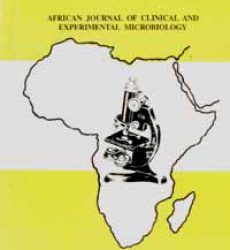Abstract
Purpose of the study: To determine the socio-demographic factors influencing the dynamics of HIV prevalence among pregnant women in Burkina Faso.
Material and methods: A total of 66,597 pregnant women from the 13 health regions of Burkina Faso were included in this study conducted between 2006 and 2014. Venous blood samples were collected and analyzed for the detection of HIV antibodies according to WHO / UNAIDS strategy II, using the mixed test Vironostika HIV Uniform II Plus O (Bio-Mérieux) and the test discriminating ImmunoCombII HIV-1 & 2 BiSpot (Orgenics). Samples with discordant results between the two tests, as well as those positive to HIV-2 or HIV-1 + 2, were retested with HIV BLOT 2.2 (MP Diagnostics). Sociodemographic data collected from the participants were correlated with their HIV status to determine key risk factors influencing HIV infection prevalence in Burkina Faso.
Results: Sociodemographic data showed that the study population consisted mainly of married women (91.2%) at their first pregnancy (27.1%) with a large majority of them being housewives (86.2%) who did not attend any form of schooling (69.4%). About 88.4% had stayed longer than a year in the health region where they initially participated in the study and 55.8% were between 20 and 29 years of age. Overall HIV prevalence significantly dropped from 2.7 % in 2006 to 1.3% in 2014. However HIV seroprevalence in this study has varied significantly according to socio-demographic characteristics including marital status, parity, occupation, education, age group and the length of stay in the women’s health community (p <0.0001). Factors sustaining HIV transmission included the status of being unmarried (OR=1.67 [1.42-1.97]), primigest (OR=1.64 [1.41-1.89]), having other occupations except being student (OR = 1.68 [1.20-2.33]), aged between 20-49 years (OR=3.14 [2.51-3.93]) and the duration of stay less than a year in their locality (OR=5.33 [4.61-10.16]) and these factors were identified as main risk factors associated with HIV prevalence.
Conclusion: Burkina Faso remains among the countries with concentrated epidemics despite a significant reduction in the prevalence observed in this study. The inclusion of identified risk factors in the national HIV program could improve the quality of the response to the epidemic.
Keywords:
Abstract
Purpose of the study: To determine the socio-demographic factors influencing the dynamics of HIV prevalence among pregnant women in Burkina Faso.
Material and methods: A total of 66,597 pregnant women from the 13 health regions of Burkina Faso were included in this study conducted between 2006 and 2014. Venous blood samples were collected and analyzed for the detection of HIV antibodies according to WHO / UNAIDS strategy II, using the mixed test Vironostika HIV Uniform II Plus O (Bio-Mérieux) and the test discriminating ImmunoCombII HIV-1 & 2 BiSpot (Orgenics). Samples with discordant results between the two tests, as well as those positive to HIV-2 or HIV-1 + 2, were retested with HIV BLOT 2.2 (MP Diagnostics). Sociodemographic data collected from the participants were correlated with their HIV status to determine key risk factors influencing HIV infection prevalence in Burkina Faso.
Results: Sociodemographic data showed that the study population consisted mainly of married women (91.2%) at their first pregnancy (27.1%) with a large majority of them being housewives (86.2%) who did not attend any form of schooling (69.4%). About 88.4% had stayed longer than a year in the health region where they initially participated in the study and 55.8% were between 20 and 29 years of age. Overall HIV prevalence significantly dropped from 2.7 % in 2006 to 1.3% in 2014. However HIV seroprevalence in this study has varied significantly according to socio-demographic characteristics including marital status, parity, occupation, education, age group and the length of stay in the women’s health community (p <0.0001). Factors sustaining HIV transmission included the status of being unmarried (OR=1.67 [1.42-1.97]), primigest (OR=1.64 [1.41-1.89]), having other occupations except being student (OR = 1.68 [1.20-2.33]), aged between 20-49 years (OR=3.14 [2.51-3.93]) and the duration of stay less than a year in their locality (OR=5.33 [4.61-10.16]) and these factors were identified as main risk factors associated with HIV prevalence.
Conclusion: Burkina Faso remains among the countries with concentrated epidemics despite a significant reduction in the prevalence observed in this study. The inclusion of identified risk factors in the national HIV program could improve the quality of the response to the epidemic.
Keywords: HIV-Pregnant Women-Risk Factors-Burkina Faso
Download full journal in PDF below
Risk factors associated with HIV prevalence in pregnant women in Burkina Faso, from 2006 to 2014

